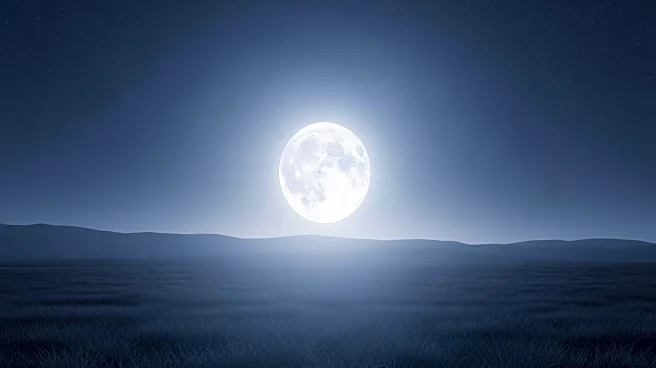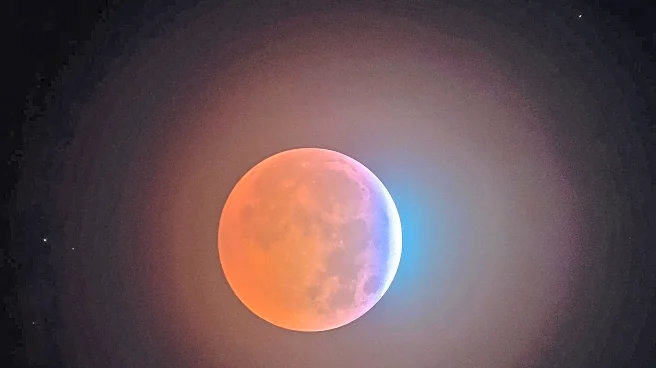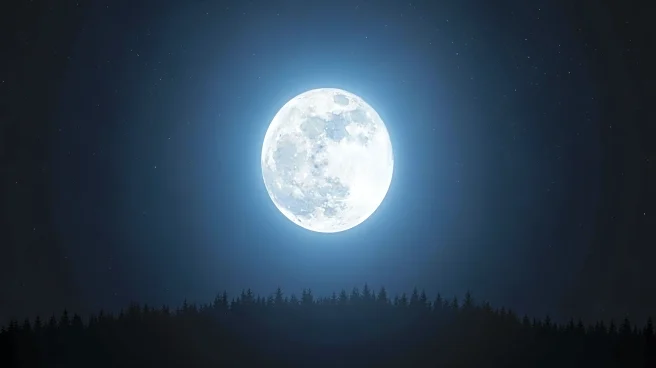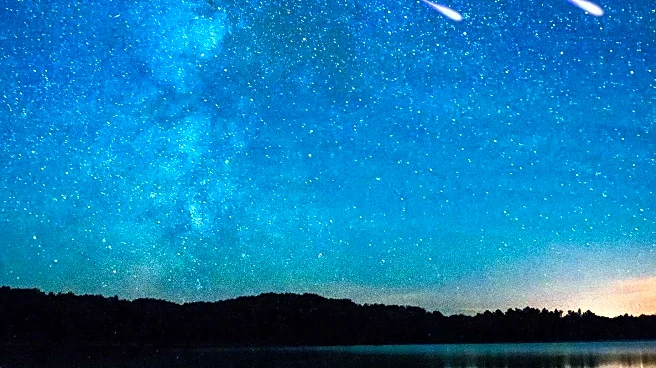What's Happening?
The full hunter's supermoon, occurring on November 4-5, 2025, is set to be the brightest full moon of the year. This astronomical event follows the full harvest moon and is notable for its increased brightness
and size due to its proximity to Earth, known as perigee. The moon will reach its full phase at 8:19 a.m. EST on November 4, providing optimal viewing conditions for sky enthusiasts. Historically, the hunter's moon has been used by hunters to illuminate fields post-harvest, and this year's supermoon is the second consecutive supermoon, following last month's full harvest moon.
Why It's Important?
The supermoon phenomenon offers a unique opportunity for astronomical observation and photography, as it appears 16% brighter and 6% larger than the average full moon. This event highlights the moon's elliptical orbit and its impact on lunar visibility. For the public, it provides a chance to engage with celestial events, fostering interest in astronomy and science. Additionally, the supermoon can influence tides, which may have implications for coastal regions. The event also serves as a reminder of the natural cycles and their effects on Earth.
What's Next?
Following the hunter's supermoon, the next significant lunar event will be the Cold Moon on December 4, 2025. Observers can expect continued interest in lunar phenomena, with potential educational and community events centered around these occurrences. The supermoon may also inspire further scientific research into lunar cycles and their broader environmental impacts.
Beyond the Headlines
The supermoon event underscores the cultural and historical significance of lunar cycles, which have been used for agricultural and hunting purposes for centuries. It also highlights the intersection of science and culture, as modern technology allows for enhanced observation and understanding of these natural phenomena.











